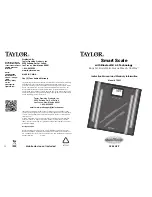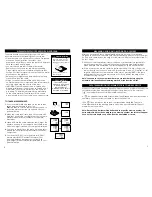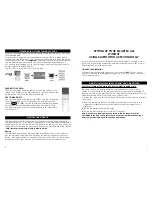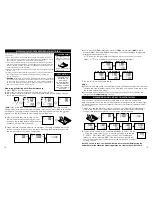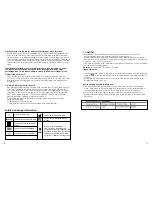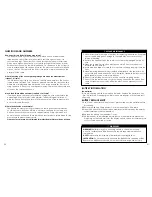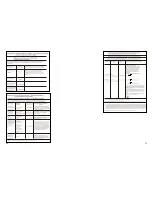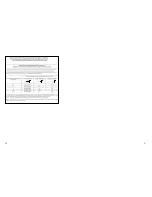
21
20
QUESTIONS AND ANSWERS:
How exactly is my body fat being measured?
This Body Fat Scale uses a measurement method known as Bioelectrical
Impedance Analysis (BIA). A small current is sent through your body, via
your feet and legs. This current flows easily through the lean muscular tissue
which has a high fluid content, but not easily through fat which has a lower
fluid content. In this way, the bio-impedance (i.e. resistance to the current) is
used to estimate body fat and body water. The electrical current is small and
may not be felt. Contact with the body is made via metal electrodes on the
platform of the scale.
What is the value of the current passing through me when the measurement
is taken? Is it safe?
This BIA technology is safe, non-invasive, toxic-free and harmless. The current
is measured at less than 1mA. However, please be aware that anyone with a
wearable or implantable medical device, such as a pacemaker, must avoid
using this device. Do not use on pregnant women. The result is inaccurate and
effects on the fetus are unknown.
Why is the Athlete Mode necessary in a Body Fat Scale?
It has been found that body fat estimation using BIA could overestimate the
percentage body fat of adult elite athletes. The physiological variation of
athletes in bone density and level of hydration are two of the reasons said to
account for the difference.
What is the definition of an Athlete?
The general consensus among researchers is that a quantitative dimension
could be used to define an athlete. An athlete is defined for this scale as a
person who consistently works out for approximately 3 times per week at 2
hours for each occurrence. These individuals should select Athlete Mode for the
most accurate measurement results.
Please note scales are not calibrated for professional athletes or body builders.
WARNING:
Batteries may pose a choking hazard. As with all small items,
do not let children handle batteries. If swallowed, seek medical attention
immediately.
NOTE:
Please recycle or dispose of batteries per local regulations.
PRECAUTION:
Do not dispose of batteries in fire. Batteries may explode or leak.
Remove the batteries if the scale will not be used for a long period of time.
WARNING!
1.
Do not disassemble the scale other than for replacing the batteries; it contains
no user serviceable parts. Damage to the scale may occur as a result of
improper handling.
2.
Remove the batteries when the scale is not used for a prolonged period of
time.
3.
Clean the scale after use with a dampened cloth. Do not use solvents or
immerse the unit in water.
4.
Avoid excessive impact or vibration to the scale, such as dropping it onto the
floor.
5.
When replacing batteries, always replace all batteries at the same time; do
not mix old and new batteries. Do not mix alkaline, standard (carbon-zinc), or
rechargeable (ni-cad, ni-mh, etc)batteries.
6.
Do not store anything on the scale, as it is a sensitive weighing device.
7.
Do not store the scale where you store cleaning chemicals. The vapors from
some household products may affect the electronic components of your
scale.
CARE AND MAINTENANCE
BATTERY REPLACEMENT
1.
Use 3 “AAA” batteries only. Remove any plastic wrap from the batteries before
proceeding.
2.
Remove the Battery Compartment Cover on the bottom of the scale.
3.
Place the batteries into the battery compartment as indicated by the polarity
symbols marked in the compartment.
4.
Replace the Battery Compartment Cover.
5.
The scale needs to be initialized before first use or after battery replacement.
Press firmly on the scale platform. The display will turn on and automatically turn
off. Your scale is now ready for use.
BATTERY INFORMATION
Low batteries
This scale is equipped with a low battery indicator. Replace the batteries when
“
Lo
” is displayed, if readings grow dim or become irregular, or if the scale shuts
off quickly.
Summary of Contents for 7222F
Page 15: ...28 29...
Page 16: ...30 31...

